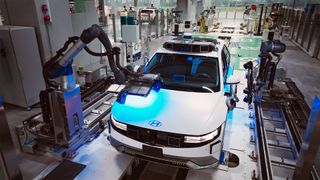Waymo’s fully-autonomous robotaxis have just hit the landmark figure of 100,000 paid trips per week, according to the company’s co-CEO – and a next-gen vehicle should soon boost that figure thanks to its new sensor system.
A recent post on X by Waymo Co-CEO Tekedra Mawakana revealed that the company had hit the major milestone for paid trips per week with its autonomous ride-hailing service.
The Google-owned company, which started testing its self-driving technology in earnest back in 2016, has slowly but surely been gaining territory in a market that the likes of Tesla and automotive giant GM consider the next big battleground.
Operating in San Francisco, Los Angeles and Phoenix, Waymo regularly adds new regions to those locations and plans to expand to Austin, Texas in the near future. This will likely see its 100,000 per week number grow rapidly in the coming months.
According to a recent blog post by the company, it saw demand for its service skyrocket after it removed a waitlist for its San Francisco service in June of this year.
It says that users making the most of the 55 square miles that are covered in the Bay Area of San Fran include parents that have entrusted the robotaxi to take their kids to school, as well as vulnerable groups and senior citizens that have “regained their independence” thanks to the autonomous service.
Trip to the top

Waymo is on course to become a leader in autonomous ride hailing, which Forbes says that some estimate becoming a $5 trillion market by 2029.
But the road to success isn’t exactly paved with gold. Tesla says it will unveil its vision of a driverless taxi service later this year, but it has already delayed the official reveal several times.
GM has also faced numerous road blocks with its Cruise operations, while the Hyundai Motor Group’s Motional autonomous ride-hailing business recently required a $1 billion investment to keep the lights on.
In order to remain at the top, Waymo has just unveiled its sixth-generation vehicle, which comes complete with an all-new sensor system.
Consisting of 13 cameras, four lidars, six radars, and an array of external audio receivers (EARs), the company says the sensor suite is “optimized for greater performance at a significantly reduced cost, without compromising safety”.
The suite has actually slimmed down on the number of sensors it uses, hence the reducing cost part, but the cameras now employed all operate at a higher resolution, meaning they can apparently ‘see’ at a greater distance.
Improved machine learning and a more powerful suite of Lidars also help, while new sensor-cleaning capabilities mean Waymo can even operate in extreme weather conditions.
Snow joke

While the company is quick to point out that rain, San Fran fog and hail currently won’t stop play, snow has previously been a potential issue without manual intervention.
The new ‘preventative’ measures ensure the autonomous vehicle can safely operate in freezing conditions, or even when a swarm of Texan bugs decide to clog up the camera lens.
In spite of these major technological advances, Waymo continues to get smarter with every journey, vacuuming up driving data and feeding it back to the fleet in order for all of its autonomous vehicles to benefit from daily learnings.
In particularly complex situations, such as impromptu road or lane closure, Waymo has a fleet response system that sees a real human in a command centre select the most sensible course action. But even these scenarios are becoming less frequent, as the ‘Waymo Driver’ becomes more intelligent over time.
With the introduction of its more powerful sixth-generation vehicle, the company says it is on track to begin operating without a human behind the wheel in about half the time that it has previously taken when introducing its service to new territories and regions.
You might also like
Services Marketplace – Listings, Bookings & Reviews
